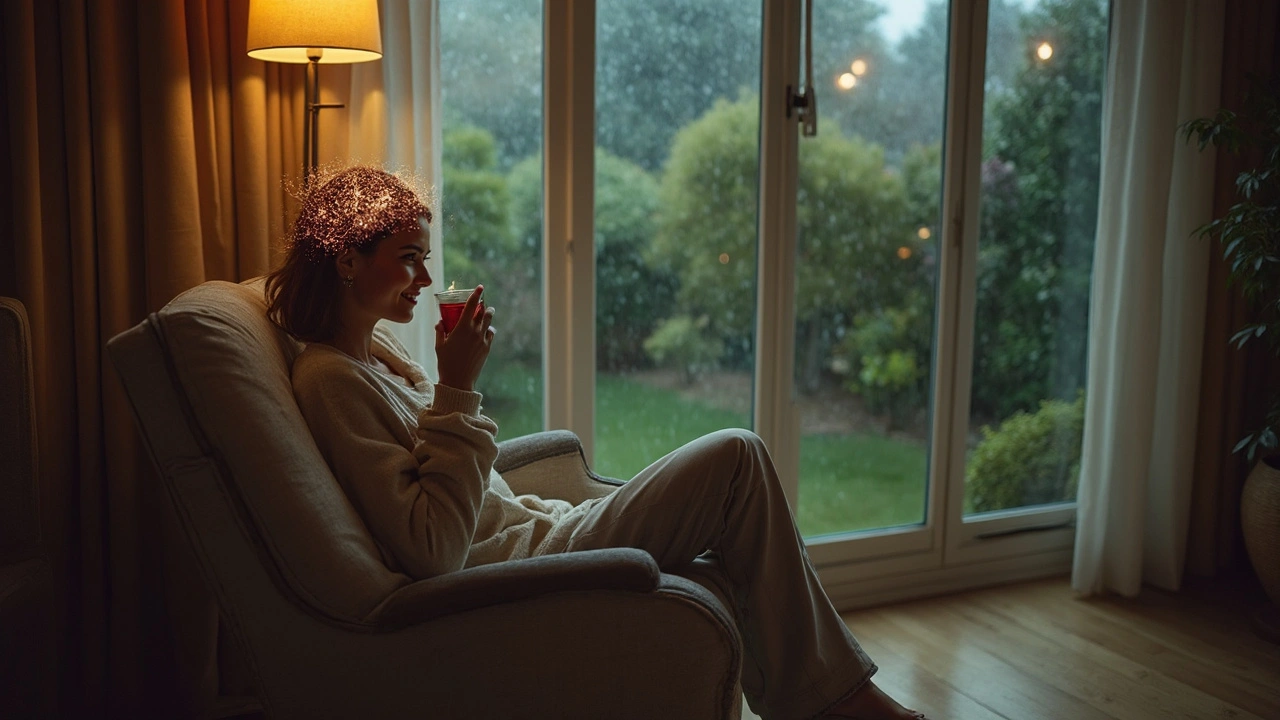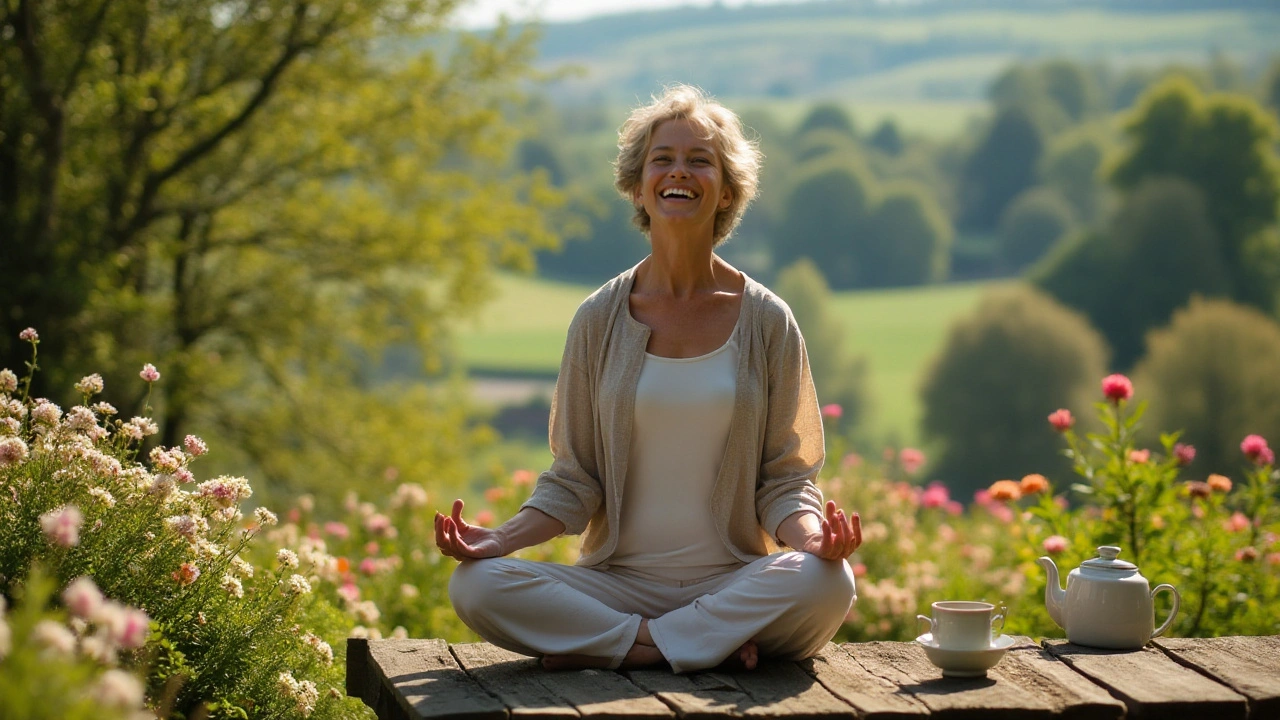Relaxation Techniques: Simple Ways to Reduce Stress Fast
Stress hits everyone. You don't need fancy tools to feel better—small routines work. Here are practical relaxation techniques you can start today, with quick steps and where they help most.
Breathing and Body Work
Start with your breath. Try box breathing: inhale 4, hold 4, exhale 4, hold 4. Do four cycles and notice your heart slow. Progressive muscle relaxation tightens then relaxes muscle groups from head to toe; spend 20–30 seconds on each zone. Combine breathing and light self-massage: rub your neck, shoulders, or temples for 30–60 seconds to release tension.
If you want tech help, try heart-rate biofeedback. Wearable sensors show your rhythms and guide slower breathing. Studies show biofeedback can lower anxiety and improve focus when used for a few minutes daily.
Mental Tools and Senses
Guided imagery shifts your focus. Close your eyes, picture a calm place, and name five sensory details—sight, sound, smell, touch, temperature. Do this for two to five minutes to reset your mood. Mindfulness anchors you in the present: notice one thing—your breath, a sound, or your feet—without judging it. Five minutes counts.
Aromatherapy and music are simple mood switches. A few drops of lavender on a cloth, or a playlist of slow songs, can lower stress fast. Keep essential oils away from pets and check for sensitivities before use.
Creative outlets like doodling, short freewriting, or playing a simple melody move stress out of your head. Even ten minutes of focused, creative play breaks the worry loop and leaves you clearer.
Body therapies work too. A short self-massage or a professional session—like sports, neuromuscular, or Ayurvedic massage—can ease chronic tension. If you sit a lot, add two minutes of myofascial release on tight spots using a foam ball. It feels sharp at first, then frees movement.
Make small habits: a 3-minute breathing check mid-afternoon, a five-minute walk after lunch, or a nightly 10-minute guided meditation. Habits stick when they're tiny and scheduled.
Pick one technique and try it for a week. Track how you feel before and after with a simple scale of 1–10. If it helps, keep it. Combine methods—breathing plus short walks, or guided imagery with calming scents—to make a routine that fits your life.
If stress feels overwhelming or persistent, talk to a health professional. These techniques help a lot, but they are tools, not replacements for medical care when you need it.
Try this simple 5-minute routine daily: sit comfortably, close your eyes, take three slow deep breaths, do one round of box breathing (4-4-4-4), scan and relax tense areas for 60 seconds, then picture a calm place for one minute. That’s five minutes to lower your stress and sharpen focus. Use apps or a timer if you need nudges. Keep a quick note of how you feel after each session—over two weeks you’ll see patterns and can pick what works best. Small steps add up fast. If pain or trauma limits you, seek professional support and keep trying daily.

Revitalize Your Mind: 10 Relaxation Techniques to Try Today
Discover 10 simple, science-backed relaxation techniques you can use today to reduce stress, calm your mind, and reset your nervous system-no special equipment or hours of time required.

Relaxation Techniques for Anxiety Relief: Conquer Fear Fast with Science-Backed Steps
Practical, science-backed relaxation techniques to calm fear and anxiety fast. Learn quick tools, daily habits, game plans, and when to get help. Clear steps, no fluff.

Effective Stress Reduction Strategies for a Balanced, Healthier Life
Discover practical stress reduction strategies, proven relaxation techniques, and expert tips to create more balance and calm in your everyday life.

Top Relaxation Techniques to Beat Stress and Improve Wellbeing
Learn how powerful relaxation techniques can crush stress, boost energy, and help you bounce back—no yoga mat required.

Relaxation Techniques: The Secret to Better Mental Performance
This article uncovers how relaxation techniques can sharpen your mental edge. It digs into simple, science-backed methods for stress relief that anyone can use. You'll find out what actually happens in your brain when you dial down stress and how that impacts focus and memory. Practical tips and unexpected facts show how even small routine changes can make you sharper and calmer. This is your shortcut to boosting brainpower without burning out.

How Reflexology is Revolutionizing Stress Management
Reflexology is shaking things up in the world of stress management by tapping into the body's natural healing powers. This practice, which involves applying pressure to specific points on the feet and hands, is gaining popularity for its ability to reduce stress and improve well-being. People swear by its calming effects and how it enhances overall health. From soothing headaches to helping with anxiety, reflexology is proving that sometimes the best solutions are the simplest ones.

Mastering Relaxation Techniques: Your Ultimate Guide to Reducing Anxiety
Anxiety can feel like an unwelcome guest that never leaves, but there are ways to reduce its impact on your life. This article explores effective relaxation techniques that can serve as powerful tools against anxiety. From the ancient practice of meditation to the soothing art of visualization, readers will discover methods that promote mental calmness and emotional balance. Each technique is designed to fit comfortably into a busy lifestyle, ensuring that relaxation is within reach even on the most hectic days.

Stress Reduction Techniques for Enhanced Health and Wellbeing
Stress reduction plays a crucial role in achieving and maintaining optimal health. By implementing various stress relief techniques, individuals can significantly improve their mental and physical wellbeing. This article delves into effective methods to alleviate stress, highlighting the connection between stress management and long-term health benefits. Understanding these techniques can empower individuals to cultivate a balanced and healthy lifestyle.

Discover the Magic of Relaxation Techniques for Stress Relief
Relaxation techniques are essential for stress relief and enhancing overall well-being. By delving into various methods like mindfulness and meditation, individuals can find what suits them best. These techniques not only reduce stress but also improve mental clarity and physical health. Understanding different approaches can empower one to lead a more serene and balanced life. This article explores effective ways to incorporate relaxation techniques into daily routines.

Effective Stress Reduction Techniques for Everyday Life
Stress is an inevitable part of life, but there are numerous ways to manage it effectively. From ancient practices like meditation to modern techniques such as mindful breathing, everyone can find a method that works best for them. This article delves into practical strategies and insights that help lower stress levels, ensuring a more balanced and fulfilled life. Learn how to adapt these techniques into daily routines to promote mental and physical well-being.

How Reflexology is Revolutionizing Stress Management
Apr, 16 2025

Aromatherapy in Skincare: The Ultimate Guide
Aug, 29 2023

Effective Techniques to Reduce Daily Stress
Oct, 18 2024

Fascia Stretching: Unlock Your Body's Full Potential
Apr, 18 2025
